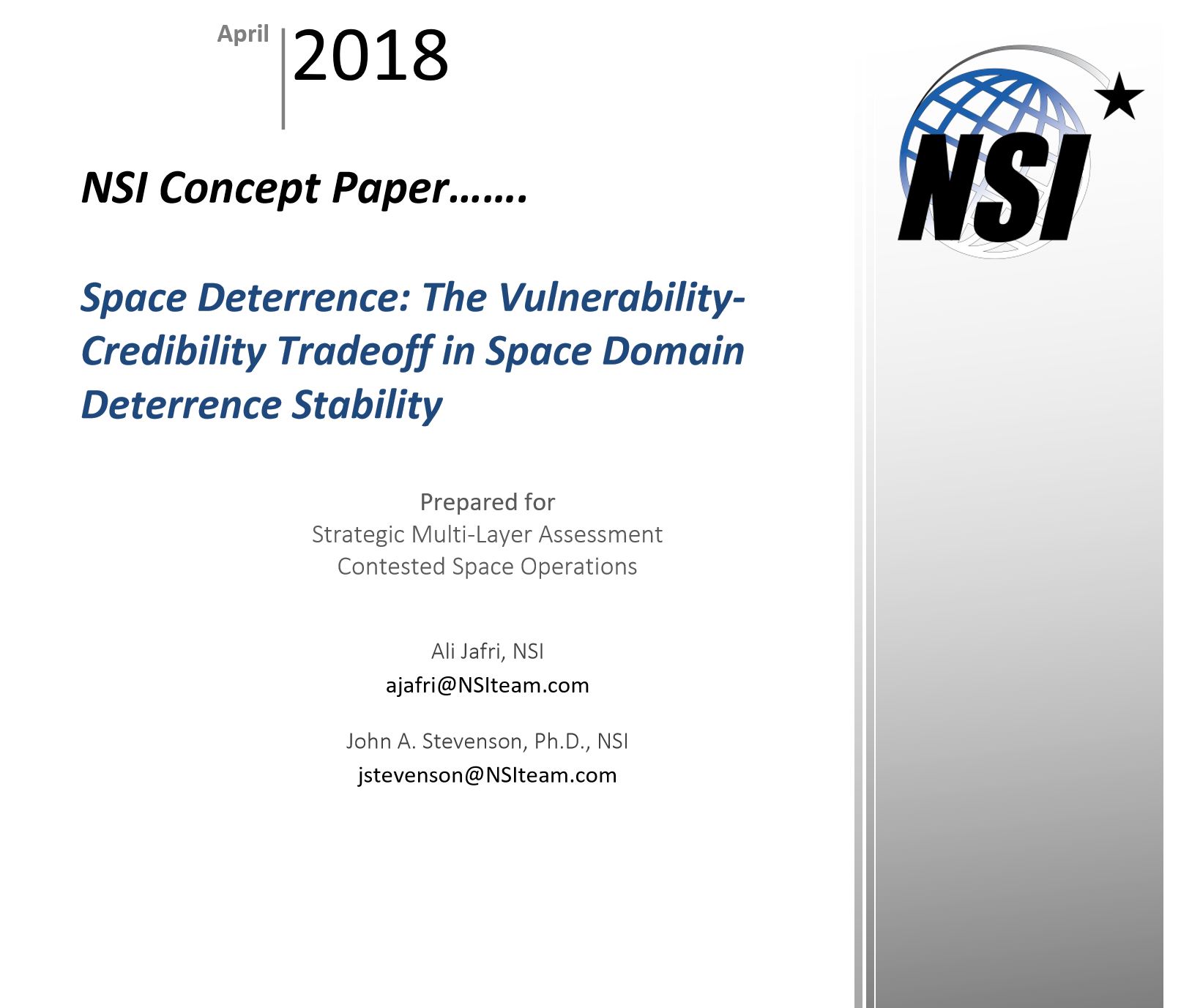Vulnerability-Credibility Tradeoff in Space Domain
Space Deterrence: The Vulnerability-Credibility Tradeoff in Space Domain Deterrence Stability
Authors: Ali Jafri (NSI, Inc.) and Dr. John Stevenson (NSI, Inc.)
Abstract
We define space deterrence as preventing intentional attacks against space capabilities, regardless of their physical location. Intentional attacks may target space capabilities to deprive space-dependent nations of the ability to leverage space capabilities to either (1) provide indirect assistance to war fighting capabilities located in other domains, or (2) directly base weapons in space. We specify two types of deterrence (Type 1 and Type 2) corresponding to the two aforementioned ways in which space-faring nations leverage space capabilities. Type 1 deterrence concerns the defense of space assets which indirectly assist warfighting capabilities. Type 2 deterrence, on the other hand, concerns the prevention of the basing of weapons in space. Type 1 deterrence exhibits a distinctive vulnerability-credibility tradeoff due to peculiar characteristics of the space domain and how the United States leverages space to enhance other elements of national power. We conclude that unlike what classic deterrence models would predict, in space deterrence remaining reliant or dependent upon vulnerable space capabilities makes commitment to Type 1 deterrence more credible and thereby stable, lessening incentives for (kinetic or other forms of) aggression in crisis and conflict.
Citation
Jafri, A. & Stevenson, J. (2018). NSI Concept Paper, Space Deterrence: The Vulnerability-Credibility Tradeoff in Space Domain Deterrence Stability,. Arlington, VA: Strategic Multi-layer Assessment (SMA).
This publication was released as part of SMA’s Contested Space Operations: Space Defense, Deterrence, and Warfighting project. For more information regarding this project, please click here.

Comments